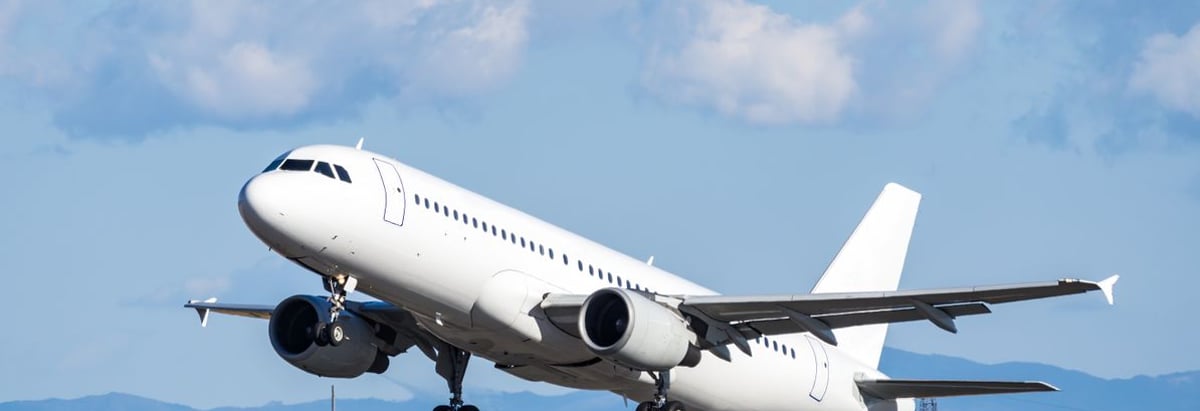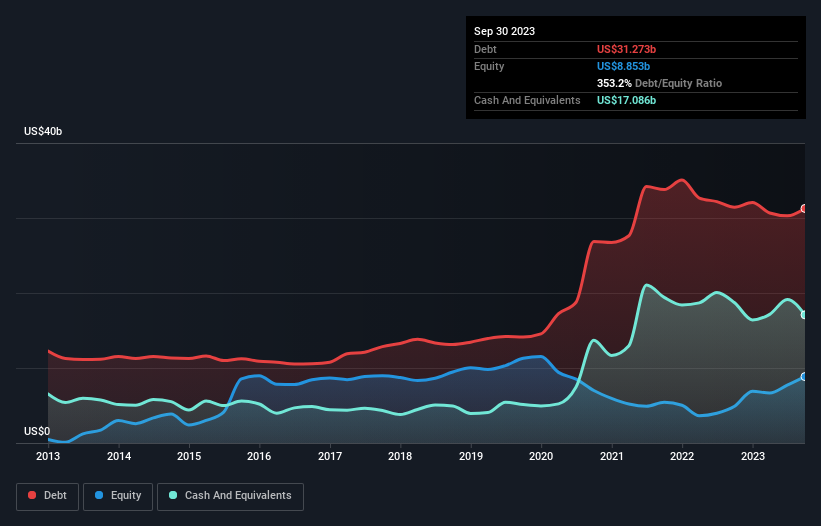- United States
- /
- Airlines
- /
- NasdaqGS:UAL
We Think United Airlines Holdings (NASDAQ:UAL) Is Taking Some Risk With Its Debt

Warren Buffett famously said, 'Volatility is far from synonymous with risk.' When we think about how risky a company is, we always like to look at its use of debt, since debt overload can lead to ruin. We can see that United Airlines Holdings, Inc. (NASDAQ:UAL) does use debt in its business. But is this debt a concern to shareholders?
When Is Debt Dangerous?
Generally speaking, debt only becomes a real problem when a company can't easily pay it off, either by raising capital or with its own cash flow. In the worst case scenario, a company can go bankrupt if it cannot pay its creditors. However, a more frequent (but still costly) occurrence is where a company must issue shares at bargain-basement prices, permanently diluting shareholders, just to shore up its balance sheet. Of course, plenty of companies use debt to fund growth, without any negative consequences. The first step when considering a company's debt levels is to consider its cash and debt together.
View our latest analysis for United Airlines Holdings
What Is United Airlines Holdings's Net Debt?
The chart below, which you can click on for greater detail, shows that United Airlines Holdings had US$31.3b in debt in September 2023; about the same as the year before. However, because it has a cash reserve of US$17.1b, its net debt is less, at about US$14.2b.

How Strong Is United Airlines Holdings' Balance Sheet?
The latest balance sheet data shows that United Airlines Holdings had liabilities of US$24.8b due within a year, and liabilities of US$39.5b falling due after that. Offsetting this, it had US$17.1b in cash and US$2.19b in receivables that were due within 12 months. So its liabilities outweigh the sum of its cash and (near-term) receivables by US$45.0b.
This deficit casts a shadow over the US$13.2b company, like a colossus towering over mere mortals. So we definitely think shareholders need to watch this one closely. After all, United Airlines Holdings would likely require a major re-capitalisation if it had to pay its creditors today.
We measure a company's debt load relative to its earnings power by looking at its net debt divided by its earnings before interest, tax, depreciation, and amortization (EBITDA) and by calculating how easily its earnings before interest and tax (EBIT) cover its interest expense (interest cover). The advantage of this approach is that we take into account both the absolute quantum of debt (with net debt to EBITDA) and the actual interest expenses associated with that debt (with its interest cover ratio).
United Airlines Holdings's net debt is sitting at a very reasonable 1.8 times its EBITDA, while its EBIT covered its interest expense just 5.5 times last year. While that doesn't worry us too much, it does suggest the interest payments are somewhat of a burden. Pleasingly, United Airlines Holdings is growing its EBIT faster than former Australian PM Bob Hawke downs a yard glass, boasting a 1,256% gain in the last twelve months. There's no doubt that we learn most about debt from the balance sheet. But it is future earnings, more than anything, that will determine United Airlines Holdings's ability to maintain a healthy balance sheet going forward. So if you're focused on the future you can check out this free report showing analyst profit forecasts.
Finally, while the tax-man may adore accounting profits, lenders only accept cold hard cash. So we clearly need to look at whether that EBIT is leading to corresponding free cash flow. During the last two years, United Airlines Holdings produced sturdy free cash flow equating to 52% of its EBIT, about what we'd expect. This free cash flow puts the company in a good position to pay down debt, when appropriate.
Our View
Neither United Airlines Holdings's ability to handle its total liabilities nor its interest cover gave us confidence in its ability to take on more debt. But the good news is it seems to be able to grow its EBIT with ease. Taking the abovementioned factors together we do think United Airlines Holdings's debt poses some risks to the business. So while that leverage does boost returns on equity, we wouldn't really want to see it increase from here. When analysing debt levels, the balance sheet is the obvious place to start. But ultimately, every company can contain risks that exist outside of the balance sheet. Be aware that United Airlines Holdings is showing 1 warning sign in our investment analysis , you should know about...
At the end of the day, it's often better to focus on companies that are free from net debt. You can access our special list of such companies (all with a track record of profit growth). It's free.
New: AI Stock Screener & Alerts
Our new AI Stock Screener scans the market every day to uncover opportunities.
• Dividend Powerhouses (3%+ Yield)
• Undervalued Small Caps with Insider Buying
• High growth Tech and AI Companies
Or build your own from over 50 metrics.
Have feedback on this article? Concerned about the content? Get in touch with us directly. Alternatively, email editorial-team (at) simplywallst.com.
This article by Simply Wall St is general in nature. We provide commentary based on historical data and analyst forecasts only using an unbiased methodology and our articles are not intended to be financial advice. It does not constitute a recommendation to buy or sell any stock, and does not take account of your objectives, or your financial situation. We aim to bring you long-term focused analysis driven by fundamental data. Note that our analysis may not factor in the latest price-sensitive company announcements or qualitative material. Simply Wall St has no position in any stocks mentioned.
About NasdaqGS:UAL
United Airlines Holdings
Through its subsidiaries, provides air transportation services in North America, Asia, Europe, Africa, the Pacific, the Middle East, and Latin America.
Proven track record and slightly overvalued.
Similar Companies
Market Insights
Community Narratives



